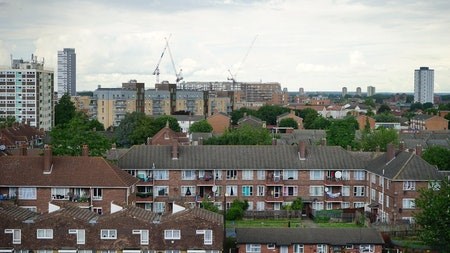The front page of Rode’s Report on the South African property market for the fourth quarter of 2021 illustrates how the different property types performed in 2021 - as if they were taking part in an F1 race.
- The housing market started the year in pole position with prices boosted by record-low interest rates, but it has lost steam since May.
- Industrial property had a solid year and overtook house prices in terms of growth towards the end of the year.
- The retail market performed better – mainly because lockdown restrictions were less severe than in 2020. But the July unrest put the brakes on the recovery in this sector.
- The office market crashed.
So, who will take the lead in 2022?
Offices
The Report shows that the office market continues to be oversupplied, resulting in an average vacancy rate of 14.2%. In Johannesburg and Cape Town (decentralised), the vacancy rates are even higher – 19.8% and 16.7%, respectively.
“The work-from-home trend has been a killer blow for the sector, and its impact is bound to be felt for years to come,” says Kobus Lamprecht, Rode Report’s editor.
Rode's latest office market survey showed that national gross rentals for A-grade space dropped by another 4.2% in the fourth quarter. It's the sixth consecutive quarter in which office rentals decreased.
Grade A nominal rentals in Cape Town decreased by 12.6% compared to the same period in 2020. Lamprecht says this is the worst decline of all the major cities.
Industrial
According to Rode's industrial survey data, the industrial property market continues to pick up. Nominal rentals in the fourth quarter of 2021 grew by 3,7% year on year amid continued low vacancies.
However, rentals still decreased in real terms after deducting building cost inflation (BER BCI), which was about 5% in the fourth quarter.
Nominal rentals grew by about 2% - an improvement on the 0,5% growth rate of 2020 but well below the roughly 5% growth achieved in 2019. This means the industrial sector is still comfortably the best placed of the major non-residential sectors.
Lamprecht says a key reason for the sterling performance of industrial property is that most developments have been non-speculative. Another has been the superior performance of logistics, especially since the pandemic started due to the online sales boom. Traditional manufacturing, however, remains under pressure.
Housing
According to Rode’s residential survey, data flat vacancy rates averaged 10,1% in the fourth quarter of 2021. This is unchanged from the previous quarter.
Vacancies generally improved in 2021 after hitting a peak of 13,1% in the fourth quarter of 2020 but remain at double pre-pandemic levels. However, Lamprecht says there are no signs yet that the improvement has resulted in increased rental growth.
According to FNB, data nominal house prices rose by 3% year on year in October 2021, gradually slowing from the pandemic peak of 5,1% in April 2021.
“The trend for 2021 showed that prices increased by 4,2% year on year over the first ten months, boosted by record-low interest rates. This was roughly on par with consumer inflation which was 4,3% over the same period,” says Lamprecht.
“House prices will probably end the year in negative territory in real terms given the increased inflation rate to 5,5% in November. It's worth noting that in nominal terms, the growth rate has consistently been decelerating since May 2021.”
He says that slower house price growth was to be expected, given the fading impact of lower interest rates amid record-high unemployment figures and an economy struggling to get back to pre-pandemic levels.
Retail
The retail property market recovered somewhat during 2021, with its capitalisation rate weakening slower as lockdown restrictions were less severe than in 2020. However, the severe July unrest and associated looting were a giant setback for this sector.
“We expect the retail market to continue its recovery in 2022. However, it will be hampered by the impact of higher inflation and interest rate hikes on consumer spending,” says Lamprecht.
Top takeaways from the Q4 Report
- The property market generally performed better in 2021 than in 2020.
- The SA economy has still not reached 2019 levels, and Covid-19 remains a threat.
- Property fundamentals like office vacancy rates and rental levels are still under pressure.
- The market is not out of the woods just yet.
- A full recovery is still a few years off.
- Continued growth deceleration in nominal house prices and growth may be negative by the end of 2022. This is because of fundamental factors, such as the weak economy, which may lead to even higher unemployment and rising interest rates.
“The crucial question in 2022 is by how much interest rates will be hiked and how quickly. Unfortunately, the answer to this question is unknown," says Lamprecht.




